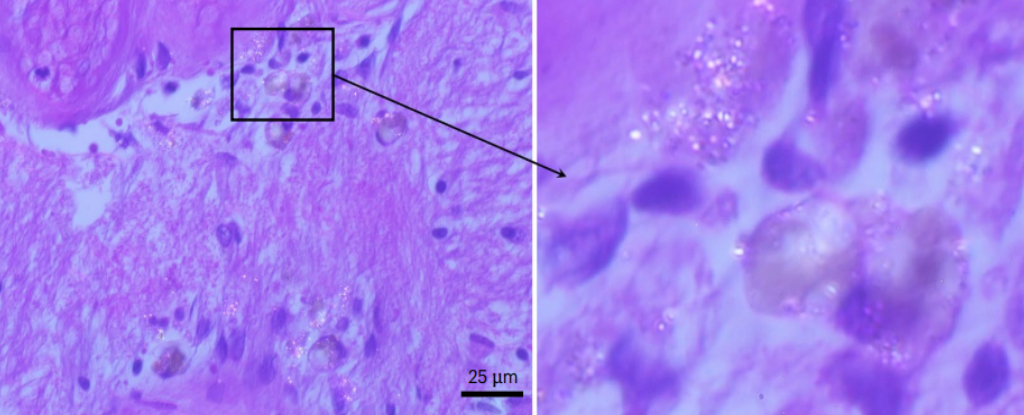ARTICLE AD
This article was originally published on November 29, 2021.
People say weed makes things taste better. I never got that—all weed ever did for me was drain the world of joy or purpose and recast all my past interactions as testaments to my utter fraudulence. In any case, I mention the weed thing here to preempt any comments about weed. I am aware that weed supposedly does this and that some jokers refer to weed as a kind of “technology.” What we are interested in, for this week’s Giz Asks, is regular, non-metaphorical technology and whether it can enhance taste buds—revive ones dulled through injury or illness or introduce healthy ones to previously unimaginable worlds of taste/sensation. Below, our experts weigh in.
Kai Zhao
Director, Nasal Physiology and Therapeutic Center, The Ohio State University
Smacking your tongue (literally) might improve your taste.
The tongue’s surface is covered by a dense structure called papillae. Before we can perceive tastes, taste stimuli must be transported via convection and diffusion through a forest of papillae—as well as saliva, taste pores, and so forth—in order to reach the taste receptors located within the taste buds on the papillae. By moving your tongue or swooshing the drink/food quickly in your mouth, you might enhance the fluid movement and make the stimuli reach the taste receptor easier.
Emily Liman
Professor, Biological Sciences, University of Southern California, whose lab studies how we sense the world around us
I’m not sure why you’d want to enhance taste buds; most people’s work just fine (unless they’ve had covid, in which case we’re talking about restoring them, and we’re not close to being able to do that).
A separate question is whether technology be used to find flavor enhancers—and the answer is absolutely yes. Molecular receptors for all five basic tastes have now been identified (the last one, sour, by my group). These can and are being used to fish out compounds that enhance or decrease their activity, leading to, for example, the identification of sweet enhancers or bitter blockers that can be added to foods or pharmaceuticals. We could also in principle use these receptors to taste test foods or pharmaceuticals.
Julien Delarue
Assistant Professor, Sensory & Consumer Science, University of California Davis, whose research focuses on methods to measure sensory perception and preferences and their effective use in food design
Theoretically, this should be possible. Taste receptors are transmembrane proteins located at the surface (the epithelium) of our taste buds. Their structure is now well-known, as are the genes coding for these proteins. Thus we could imagine that, in the future, you could get mRNA injections to trigger the production of these proteins by our taste cell.
The real question is: why would you want to do that? Being a supertaster is not necessarily a pleasant thing! There is actually a wide disparity among people in terms of taste sensitivity. Super-tasters naturally exist without the help of biotechnology. They tend to be super-sensitive to sweetness and bitterness. I’m one of them, and sometimes I wish I were a normal taster!
Another way to address this question might be: is it possible to enhance the taste of our food? The answer to that is yes, by combining tastants and flavor-enhancers that create a synergy with taste compounds. This is something we do when we cook (by adding broth or mushrooms to ‘potentiate’ the flavor of a dish), and that the food industry also does (with the most famous flavor-enhancer being monosodium glutamate, MSG, which also has a umami taste). Using such tricks is also a way to reduce the salt content of some foods or to make plant-based meat replacements more tasteful.
Richard Mattes
Professor, Nutrition Science, Purdue University
I think we’re at the beginning of a new era in taste research, in which we’ll realize that the sense is broader than commonly believed. That is to say, we can detect more kinds of chemicals than just those that impart sweet, salty, sour, bitter, and umami sensations. Evidence is building that humans can detect fat, starch, calcium, Co2, and other chemicals. If this is true, there is ample room in the future for new opportunities to exploit these capabilities. Moreover, detection may just be the beginning. We have our sensory systems to collect information that allows us to take physiological and behavioral responses to enhance our survival. The implications of these new sensory capabilities is unknown but potentially great.
Linda Bartoshuk
Professor, Food Science and Human Nutrition, University of Florida, and an international leader in taste research
No, you can’t technologically alter your taste buds. But you can, potentially, take healthy foods and make them taste better, which is what our lab is working on now.
Making people take pleasure in healthy foods is a tough order. The truth is, we’re hard-wired to love sweet and salty and fat. Our brains are wired that way, because when we’re babies, that’s survival—getting sugars and salts and fats is one of the most important things you can do to stay alive.
Historically, these kinds of foods were not that easy to get. That has obviously changed. It is also a fact that, once you have your children, evolution doesn’t care at all about what happens to you—you’re deadweight. So evolution did not bother to create mechanisms to turn those preferences off.
Can we produce a sweet taste that’s safe? Well, probably not. Everyone used to think saccharine was the silver bullet here, but modern research tells us that it’s just the opposite—saccharine can actually make you gain weight.
That said, we’re making some progress in that direction with our current research, and that work is centered on volatiles. A volatile is a compound that’s evaporated in the air. Smells are volatiles. When you take a bite of food and chew it, those volatiles are released and go up into your nose through what’s called the retronasal space. The brain knows those volatiles came from your mouth; it pays attention, and processes them in a different area than it uses to process smells. That’s what flavor is.
The flavor part of the brain overlaps with the area where taste is processed. Strawberries, for instance, have volatiles that go into the flavor/taste part of the brain and make the sweet message more intense. In the 1970s, when I came to Florida, I started working with people in horticulture—unbelievably skilled plant biologists—and we discovered a hundred of these sweet-intensifying volatiles in different fruits. And as it turns out, when you add these volatiles to foods that contain sugar or artificial sweeteners, it makes those foods taste sweeter. This works on people with nerve damage to their sense of taste; it works on people whose sense of taste has been diminished by covid. These volatiles send messages up the brain and enhance the sweet taste without ever going through your taste nerves.
We’re still far from producing products, but if you came to the lab, you could taste a sugar solution with our magic volatiles in it and it would taste twice as sweet as the sugar alone.
Do you have a burning question for Giz Asks? Email us at [email protected].

 7 months ago
44
7 months ago
44 

